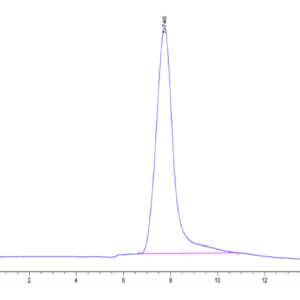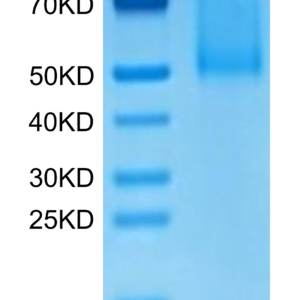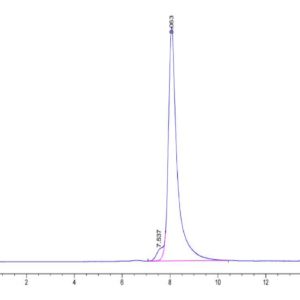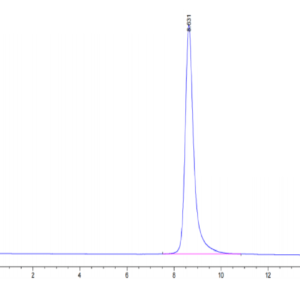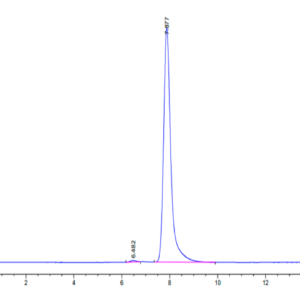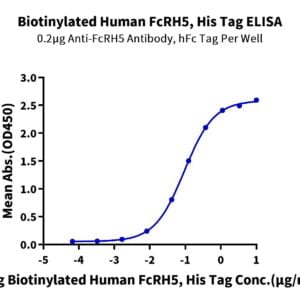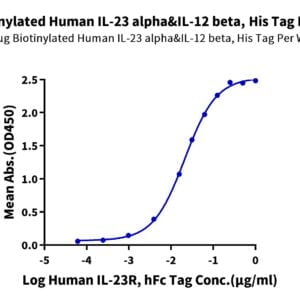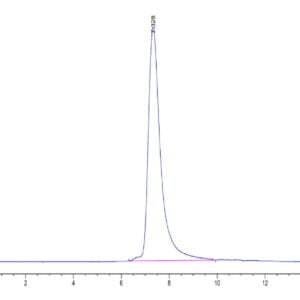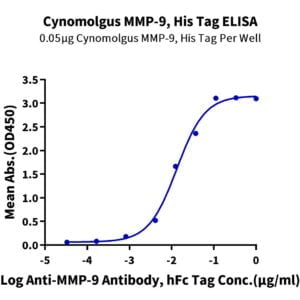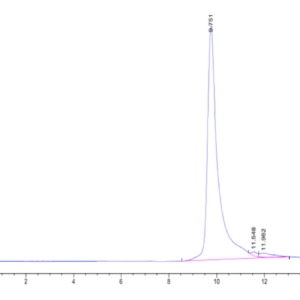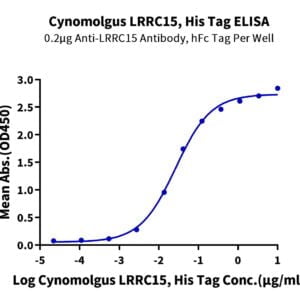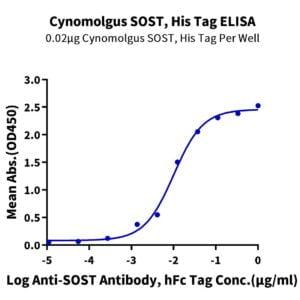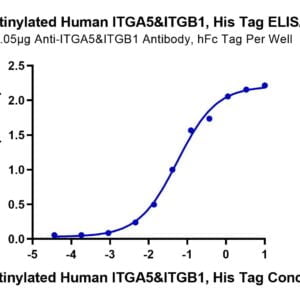| Weight | 1 lbs |
|---|---|
| Dimensions | 9 × 5 × 2 in |
| express system | HEK293 |
| product tag | C-His-Avi |
| purity | > 95% as determined by Tris-Bis PAGE;> 95% as determined by HPLC |
| background | The hemoglobin (Hb) scavenger receptor, CD163, is a macrophage-specific protein and the upregulated expression of this receptor is one of the major changes in the macrophage switch to alternative activated phenotypes in inflammation. Accordingly, a high CD163 expression in macrophages is a characteristic of tissues responding to inflammation. |
| molecular weight | The protein has a predicted MW of 111.4 kDa. Due to glycosylation, the protein migrates to 120-140 kDa based on Tris-Bis PAGE result. |
| available size | 100 µg, 500 µg |
| endotoxin | Less than 1EU per μg by the LAL method. |
Biotinylated Human CD163 Protein 3130
$525.00 – $1,750.00
Summary
- Expression: HEK293
- Pure: Yes (HPLC)
- Amino Acid Range: Ser42-Ser1045
Biotinylated Human CD163 Protein 3130
| protein |
|---|
| Size and concentration 100, 500µg and lyophilized |
| Form Lyophilized |
| Storage Instructions Valid for 12 months from date of receipt when stored at -80°C. Recommend to aliquot the protein into smaller quantities for optimal storage. Please minimize freeze-thaw cycles. |
| Storage buffer Shipped at ambient temperature. |
| Purity > 95% as determined by Tris-Bis PAGE |
| target relevance |
|---|
| The hemoglobin (Hb) scavenger receptor, CD163, is a macrophage-specific protein and the upregulated expression of this receptor is one of the major changes in the macrophage switch to alternative activated phenotypes in inflammation. Accordingly, a high CD163 expression in macrophages is a characteristic of tissues responding to inflammation. |
| Protein names Scavenger receptor cysteine-rich type 1 protein M130 (Hemoglobin scavenger receptor) (CD antigen CD163) [Cleaved into: Soluble CD163 (sCD163)] |
| Gene names CD163,CD163 M130 |
| Mass 9606Da |
| Function Acute phase-regulated receptor involved in clearance and endocytosis of hemoglobin/haptoglobin complexes by macrophages and may thereby protect tissues from free hemoglobin-mediated oxidative damage. May play a role in the uptake and recycling of iron, via endocytosis of hemoglobin/haptoglobin and subsequent breakdown of heme. Binds hemoglobin/haptoglobin complexes in a calcium-dependent and pH-dependent manner. Exhibits a higher affinity for complexes of hemoglobin and multimeric haptoglobin of HP*1F phenotype than for complexes of hemoglobin and dimeric haptoglobin of HP*1S phenotype. Induces a cascade of intracellular signals that involves tyrosine kinase-dependent calcium mobilization, inositol triphosphate production and secretion of IL6 and CSF1. Isoform 3 exhibits the higher capacity for ligand endocytosis and the more pronounced surface expression when expressed in cells.; After shedding, the soluble form (sCD163) may play an anti-inflammatory role, and may be a valuable diagnostic parameter for monitoring macrophage activation in inflammatory conditions. |
| Catalytic activity #N/A |
| Subellular location [Soluble CD163]: Secreted .; Cell membrane ; Single-pass type I membrane protein. Note=Isoform 1 and isoform 2 show a lower surface expression when expressed in cells. |
| Tissues Expressed in monocytes and mature macrophages such as Kupffer cells in the liver, red pulp macrophages in the spleen, cortical macrophages in the thymus, resident bone marrow macrophages and meningeal macrophages of the central nervous system. Expressed also in blood. Isoform 1 is the lowest abundant in the blood. Isoform 2 is the lowest abundant in the liver and the spleen. Isoform 3 is the predominant isoform detected in the blood. |
| Structure Interacts with CSNK2B. |
| Post-translational modification A soluble form (sCD163) is produced by proteolytic shedding which can be induced by lipopolysaccharide, phorbol ester and Fc region of immunoglobulin gamma. This cleavage is dependent on protein kinase C and tyrosine kinases and can be blocked by protease inhibitors. The shedding is inhibited by the tissue inhibitor of metalloproteinase TIMP3, and thus probably induced by membrane-bound metalloproteinases ADAMs.; Phosphorylated. |
| Domain Th |
| Target Relevance information above includes information from UniProt accession: Q86VB7 |
| The UniProt Consortium |
Data
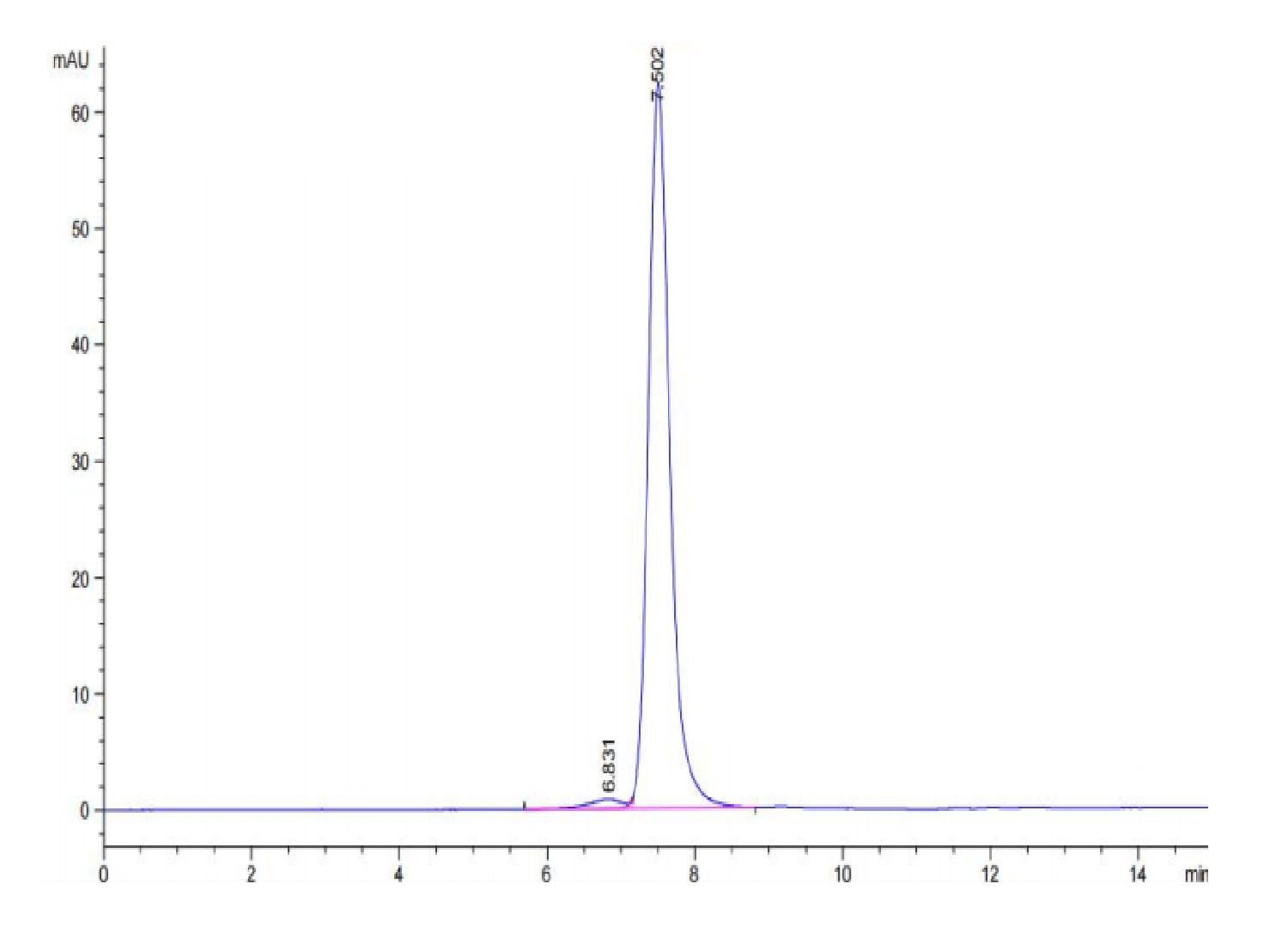 |
| The purity of Biotinylated Human CD163 is greater than 95% as determined by SEC-HPLC. |
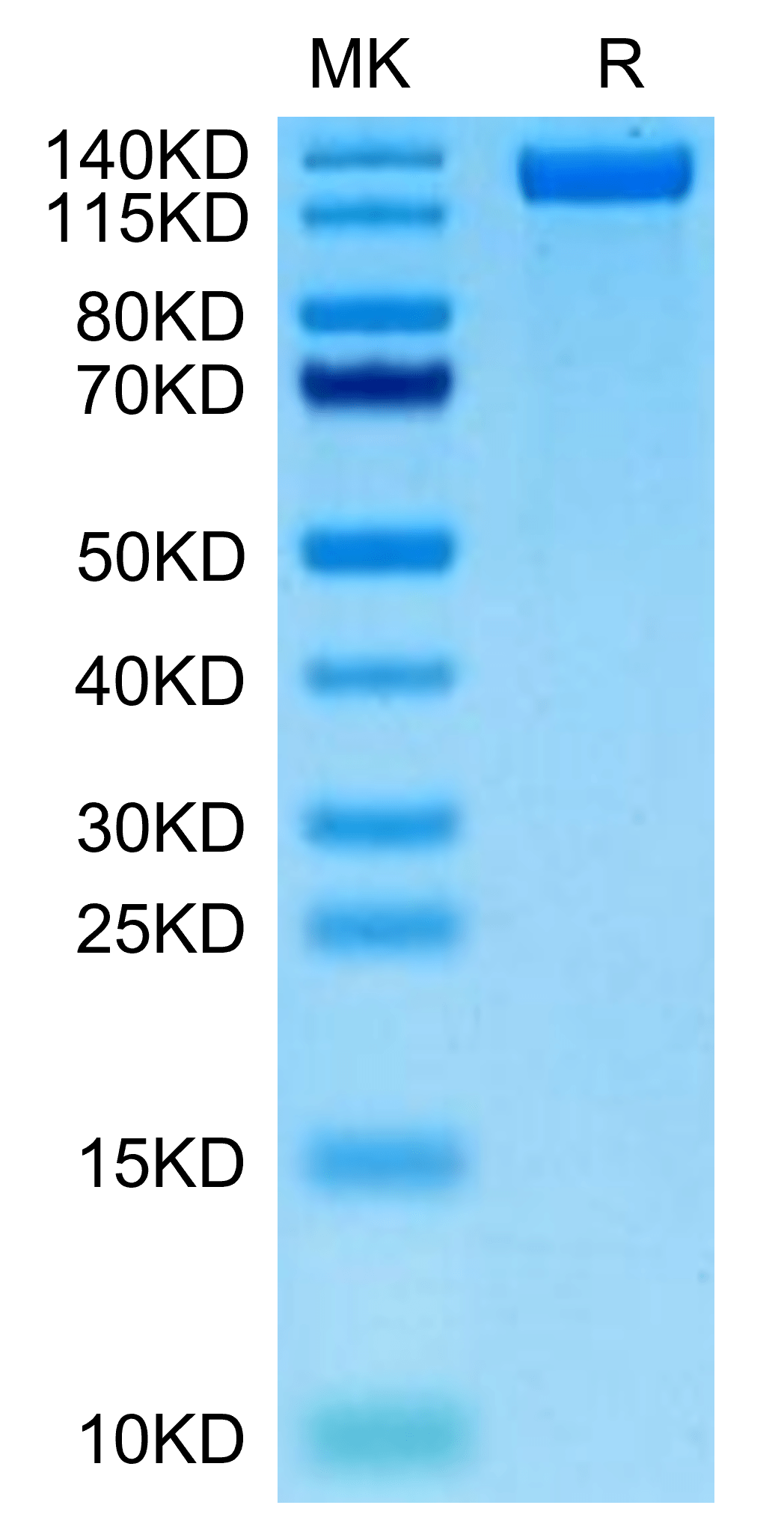 |
| Biotinylated Human CD163 on Tris-Bis PAGE under reduced condition. The purity is greater than 95%. |
Publications
Publications
| pmid | title | authors | citation |
|---|---|---|---|
| We haven't added any publications to our database yet. | |||
Protocols
| relevant to this product |
|---|
Documents
| # | ||
|---|---|---|
| Please enter your product and batch number here to retrieve product datasheet, SDS, and QC information. | ||
